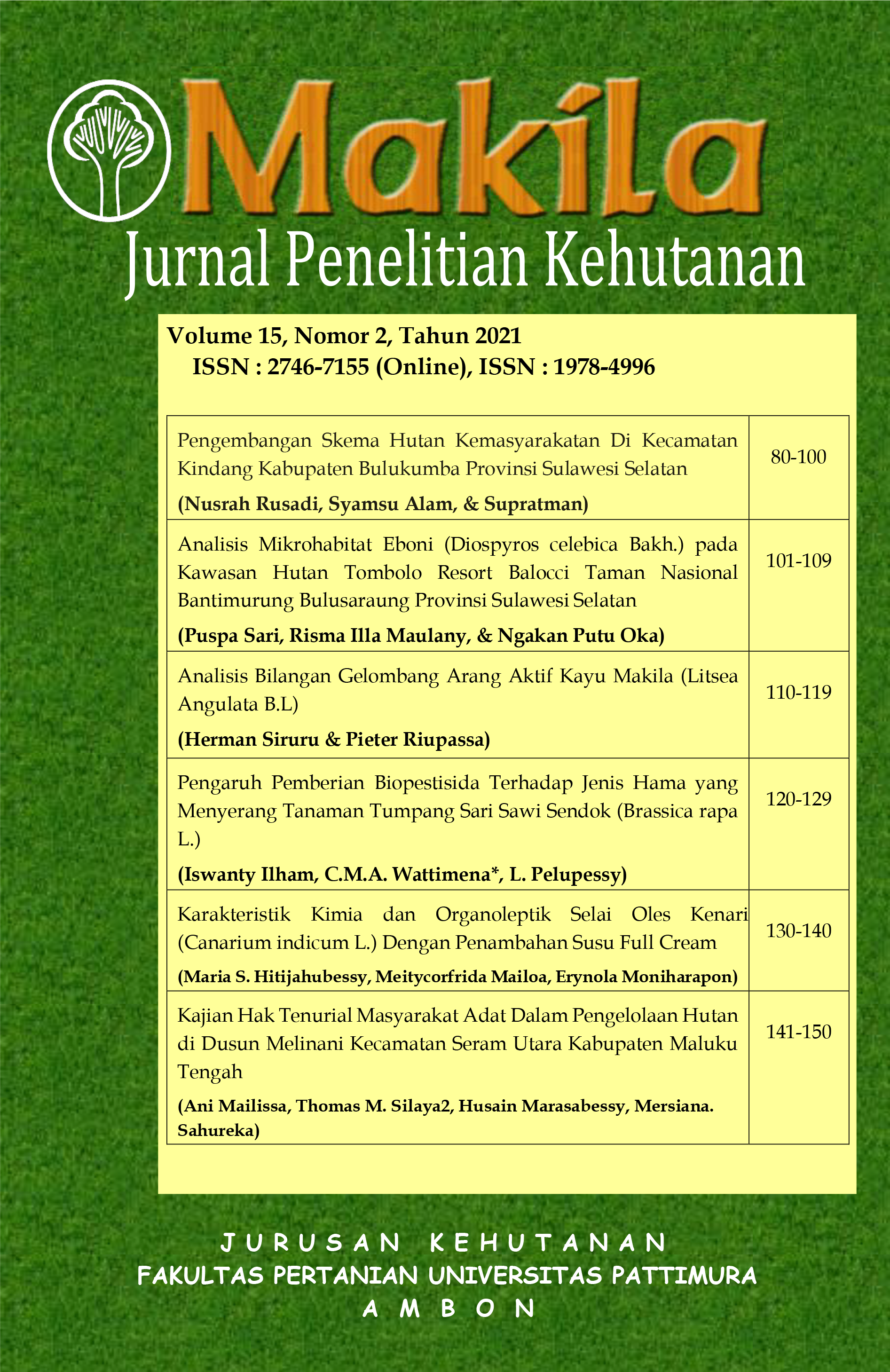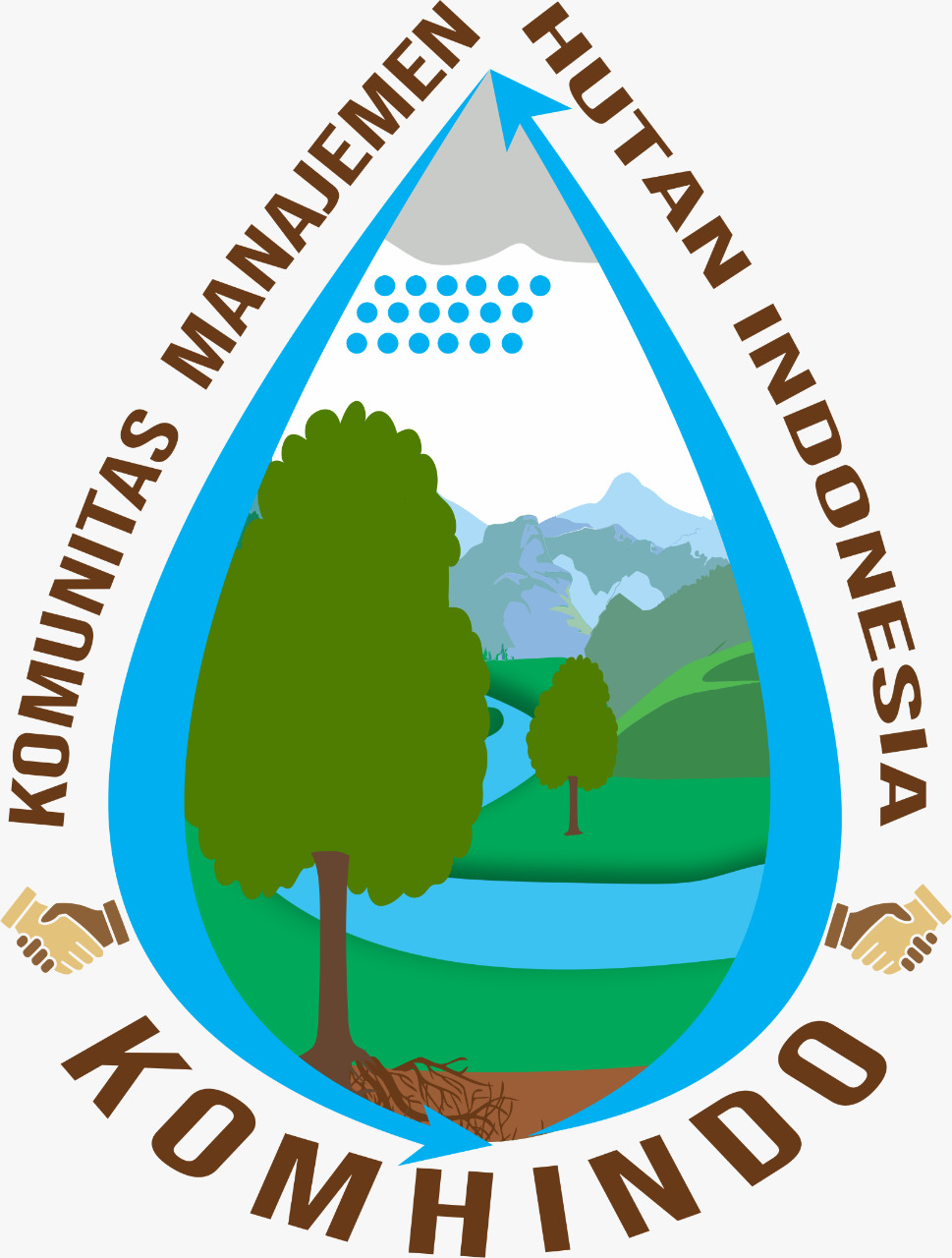Pengembangan Skema Hutan Kemasyarakatan Di Kecamatan Kindang Kabupaten Bulukumba Provinsi Sulawesi Selatan
Abstract
This research aims to analyze the success rate of community forest management, analyze driving factors and inhibitory factors, and formulate strategies for the development of community forest management. The data obtained is identified and reviewed through a table of criteria and indicators then analyzed descriptively through the Methods of Force Field Analysis and Analysis Hierarchy Process. The results showed that community forest management in the Kindang District of Bulukumba Regency succeeded with 2.2. The driving factors of community forest management are stakeholder assistance, community involvement in land use, internal rules of groups and work programs, the service of productive economic tools, and the implementation of a good agroforestry system. The inhibition factor consists of the involvement of members of forest farming groups in non-maximal management, non-routine meetings, no socialization related to community forest policy, utilization of natural attractions has not been optimal, the lack of socialization of forest protection and security, and non-participatory patrol activities. The proper management development strategy consists of conducting regular meetings involving various parties, socializing related to community forest policy, applying each group of forest farmers in strengthening human resource capacity, land use, and maximum productive economic tool assistance, the preparation of a master plan of tourist attractions and participatory forest protection and security activities.
Downloads
Copyright (c) 2021 Nusrah Rusadi, Syamsu Alam, Supratman Supratman

This work is licensed under a Creative Commons Attribution 4.0 International License.











